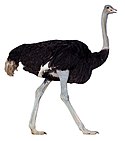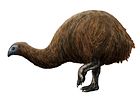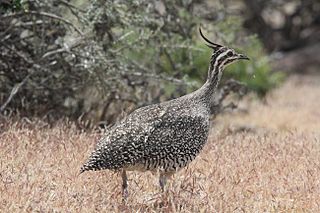
Tinamous form an order of birds called Tinamiformes, comprising a single family called Tinamidae, divided into two distinct subfamilies, containing 46 species found in Mexico, Central America, and South America. The word "tinamou" comes from the Galibi term for these birds, tinamu. Tinamous have traditionally been regarded as the sister group of the flightless ratites, but recent work places them well within the ratite radiation, implying basal ratites could fly. Tinamous first appear in the fossil record in the Miocene epoch. They are generally sedentary, ground-dwelling and, though not flightless, when possible avoid flight in favour of hiding or running away from danger. They are found in a variety of habitats, ranging from semi-arid alpine grasslands to tropical rainforests. The two subfamilies are broadly divided by habitat, with the Nothurinae referred to as steppe or open country tinamous, and the Tinaminae known as forest tinamous.
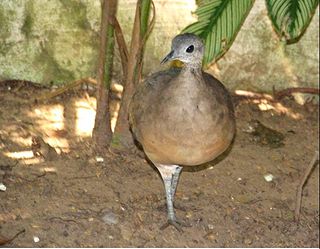
The white-throated tinamou is a species of bird native to the Amazon rainforest of Brazil, northern Bolivia, southeastern Colombia, northeastern Ecuador, eastern Peru and southern Venezuela.

The brown tinamou is a brownish ground bird found in humid lowland and montane forest in tropical and subtropical South America.

The Andean tinamou is a tinamou, found commonly in high-altitude shrubland, in the Andes of South America.
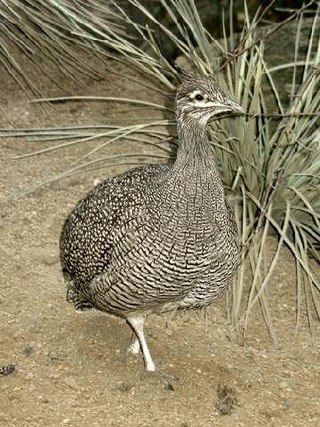
The elegant crested tinamou or martineta tinamou is a medium-sized tinamou that can be found in southern Chile and Argentina in Shrubland. The bird has an omnivorous diet. This species is terrestrial due to their poor flying ability.

Crypturellus is a genus of tinamous containing mostly forest species. However, there are the odd few that are grassland or steppe tinamous. The genus contains 21 species.
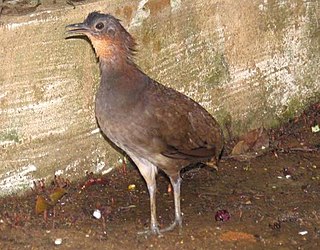
The Brazilian tinamou is a type of tinamou found in tropical moist lowland forest in regions of Amazonian South America.

The Choco tinamou or Chocó tinamou is a type of tinamou found in lowland forest and montane forest in subtropical and tropical regions of Colombia and Panama.

The rusty tinamou or short-billed tinamou is a type of tinamou commonly found in swamp forest in tropical regions of South America.

The small-billed tinamou is a type of Tinamou commonly found in dry savanna in Amazonian South America.

The barred tinamou is a type of tinamou commonly found in lowland moist forest in subtropical and tropical regions of northern South America.

The Tataupa tinamou is a type of tinamou commonly found in dry forest in subtropical and tropical regions in southeastern South America.
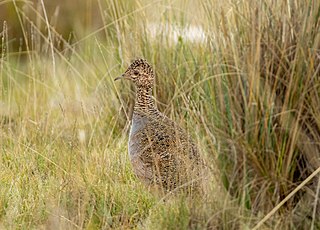
The ornate tinamou is a type of tinamou commonly found in the high altitude grassland and dry shrubland in subtropical and tropical regions of west central South America.

The brushland tinamou is a type of tinamou commonly found in high-altitude dry shrubland in subtropical and tropical regions of southern South America.
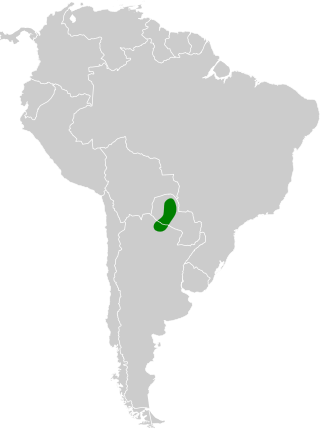
The Chaco nothura is a type of tinamou commonly found in brushland in Argentina and Paraguay.
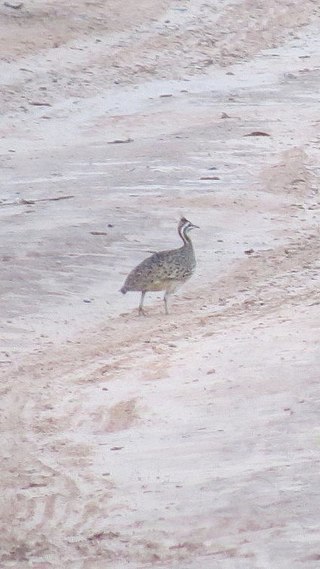
The quebracho crested tinamou is a species of tinamou found in dry forest habitats in Paraguay and northern Argentina in South America.

The huayco tinamou, also known as waypu (Quechua), is a species of bird found on grassy mountain ridges in the Andes of Bolivia and Argentina.

Nothura is a genus of birds in the tinamou family. This genus comprises five members of this South American family.

Nothurinae or aridland tinamous is one of two subfamilies of the Tinamidae family, the other being Tinaminae. It contains eighteen species in six genera. The six genera are:






















